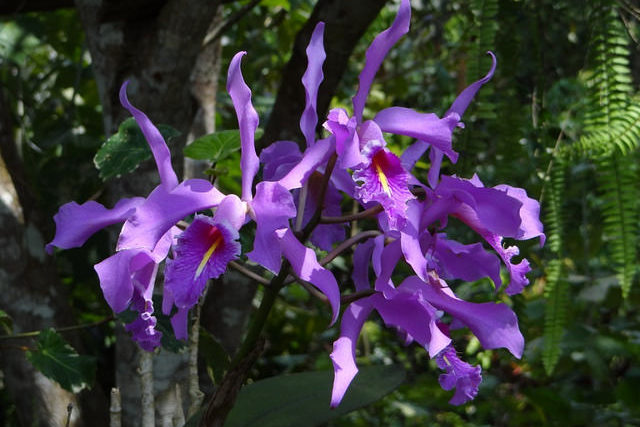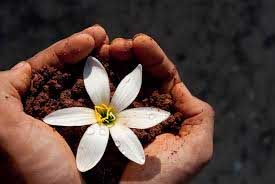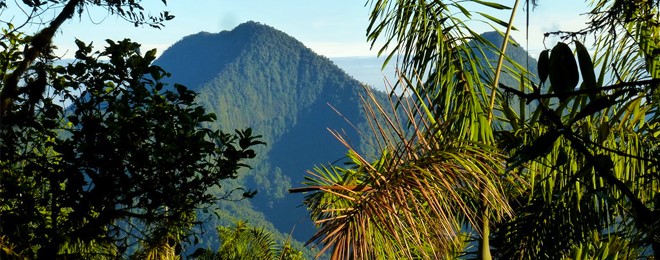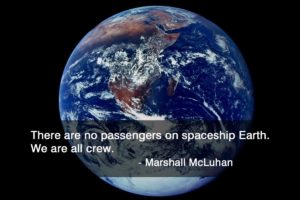
Conservation means having compassion for the Earth and its biodiversity
Our love of orchids is an amazing thing. It causes us to come together as a group, to share ideas on how to be care for our beautiful plants, we share and trade among ourselves, thereby improving our collections, and we get a very special satisfaction in knowing we are doing something good to protect some of the Earth’s species when we together participate in conservation efforts.
To me, this all translates into compassion for the Earth herself. That may sound a bit odd to some readers. Do we really need compassion for the Earth? We experience compassion in many areas in our lives such as the feeling we get when we see the appeals for adopting an animal, or when we see a malnourished child on TV. But does the Earth need our compassion, when we know that it can easily rattle us with earthquakes or sweep us away with floods? When these disasters strike, our attention and compassion is always for those who suffer and have been left homeless, not for the Earth itself.
 The common paradigm is to think that Mother Nature has the upper hand, and the Earth’s inhabitants are victims, prey to the whims of weather and geophysics. Why, then, should we think about having compassion for the Earth?
The common paradigm is to think that Mother Nature has the upper hand, and the Earth’s inhabitants are victims, prey to the whims of weather and geophysics. Why, then, should we think about having compassion for the Earth?
A dictionary definition of compassion says it is “a deep sympathy and sorrow for another who is stricken by misfortune accompanied by a strong desire to alleviate the suffering or remove the cause”.
Is the “another” in this definition necessarily a person? Our planet is not a person, though we have humanized her by calling her “Mother Earth” or “Mother Nature”. On the one hand, we would not feel sympathy for one of Mother Earth’s mountains that experienced a landslide, because that mountain itself did not “suffer” in the way malnourished child suffers. On the other hand, we are saddened when we see pictures of miles of mountain ranges which have been flattened, their forests destroyed, their rivers polluted, all for the sake of mining coal.
It seems that somewhere in the core of our humanity we do feel a connection with anything in nature that might have suffered. We ache for the birds whose nests have disappeared as trees are swept up in a mudslide. We cringe and turn away from pictures of piles of ivory being loaded onto a truck, with the bloody carcasses of the slaughtered elephants lying nearby. There is a mysterious connection to nature that many feel is in our DNA from millions of years ago when we first came out of the forests and cultivated the lands. Instinctively we love the sound of birdsong in the mornings, and we enjoy a window with a view of nature. Deep down we know that all of us animals and plants share the same cell structures, and we all need food, water and air. In that sense we are all part of the Earth.
To see the world in a grain of sand,
And heaven in a wild flower.
Hold infinity in the palm of your hand,
And eternity in an hour.
from William Blake’s poem “Auguries of Innocence”
Going back to our definition of “compassion” we next see “…stricken by misfortune…” as the second component. Misfortune we recognize as something that causes harm, and “stricken” implies something which was not brought on by the actions of the victim. It is certainly a “misfortune” that half of the forests of the world have been lost to axes and bulldozers. It is a misfortune that the rivers we swam in when we were young are no longer fit even for fish to swim in. It is a misfortune that we don’t have clean air to breathe, or pollution-free water to drink.
The question is this: Are all these things the Earth’s misfortune, or are they the human race’s misfortune? Should we weep for Mother Nature, or for ourselves? The inevitable conclusion we must come to is that they are one and the same. When the Earth suffers, we humans must suffer in turn. We are mutually interdependent with this little planet that is our home.

Rain forest in Brazil after clear cutting
The last, and most important, part of the definition of compassion reads “a strong desire to alleviate the suffering or remove the cause”. When we see a person or animal who is hurt, or when we acknowledge that we are losing our rain forests to agriculture and logging, we surely feel this kind of “strong desire”. But unless we take action, we cannot claim that we are compassionate.
We like to think of ourselves as being compassionate, but don’t always know what can be done. It is too easy to say someone else should adopt that dog or cat at the shelter or send money to a relief fund. It is always tempting to be outraged at things that are wrong, and say that “someone” needs to do something about it. But aren’t we all “someone”?

Dracula orchid reserve in northern Ecuador – land purchased by Rainforest Trust to provide habitat for native species, and to protect the forest from clear cutting and mining.
We live in the most compassionate time in all of history. There are hundreds of environmental groups that are working to save nature and the critical biospheres that our life on this earth depend upon. These groups provide a great venue for us to practice compassion for the Earth. We can support them in their efforts without having to leave the comforts of home to do it.
Whenever I speak to orchid societies about rainforest and habitat conservation I meet many compassionate people who care enough to support Rainforest Trust, the Smithsonian Orchid Conservation Center and other like-minded groups. Their suport motivates me to continue in my effort to use my art to encourage others in practicing this kind of compassion.
I recently gave a talk (in the style of TED talks) in which I told the story of how I turned my passion for orchids into compassion for the earth, and how this caused me to devote all proceeds from my art sales toward conservation. You can watch it here. It is 13 minutes.
I will end today with one of my favorite quotations from Canadian philosopher Marshall McLuhan:
